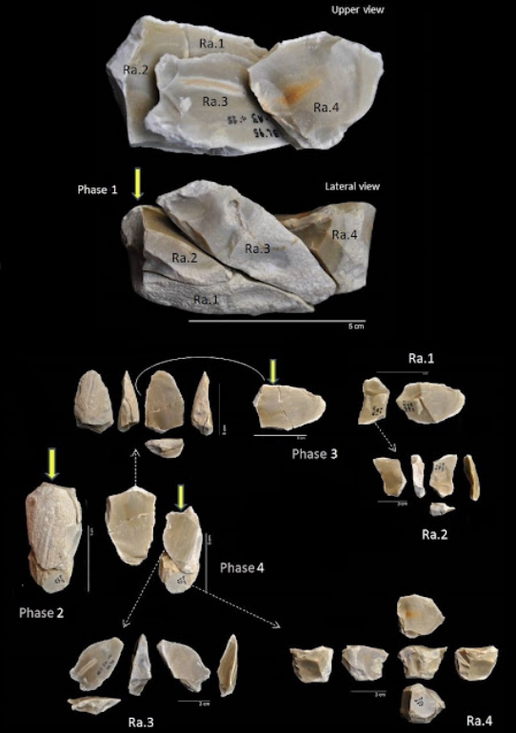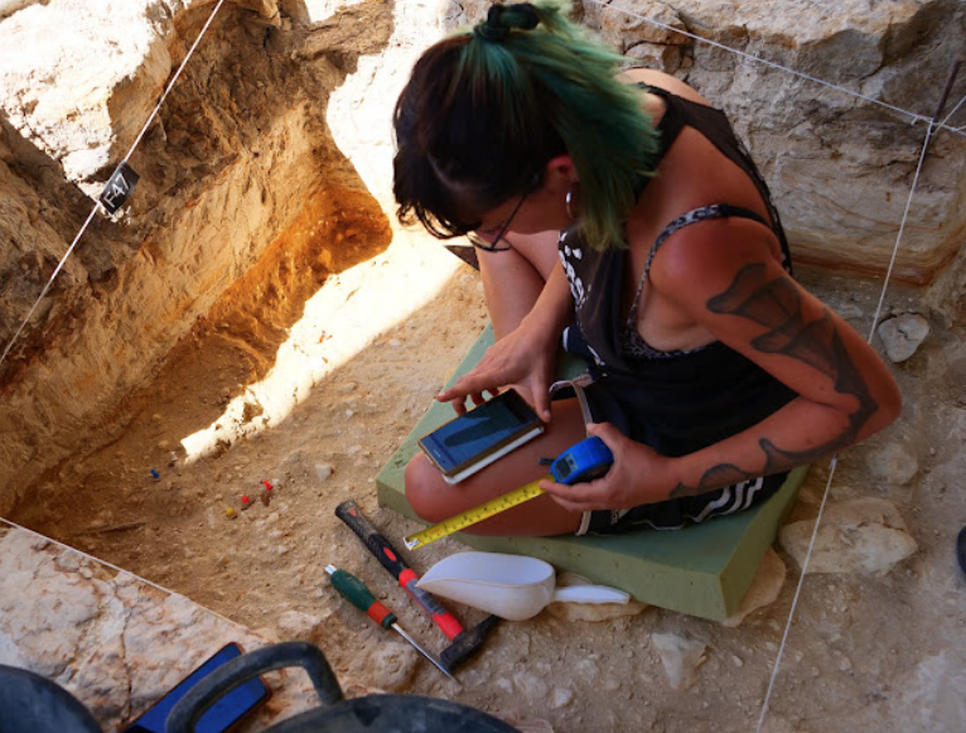1.4 MILLION YEARS AGO IN EUROPE, ORCE BECAME AN AREA OF ATTRACTION FOR THE MANUFACTURE AND USE OF STONE TOOLS
Torrential rains in Barranco León allowed the first hominins to opportunistically take advantage of an accumulation of raw materials
Located in the northeastern sector of the Guadix-Baza basin, at the foot of the Sierra de la Umbría (Granada), the 1.4 million year old Barranco León site (Orce) is known for its exceptionally rich archeological collection, which currently comprises some 2,500 items made of local limestone and flint. The site has also provided an abundant paleontological record that includes herbivores and carnivores, numerous microvertebrate remains, and even a hominin tooth that is currently the oldest human fossil in Western Europe. In this context, the presence of both fresh and eroded lithic artifacts and faunal remains had baffled researchers for decades.
Now, after many years of meticulous excavation campaigns, exhaustive lithic analyses and conscientious geological studies, it has been disclosed that, after a period of heavy rains, Barranco León became a raw materials reservoir: an accumulation that was used by the first peoples to occupy Europe. This research, led by Stefania Titton, funded by the Provincia Autonoma di Bolzano (Italy) post-master scholarship, has just completed her doctorate in Quaternary and Prehistory from the Universitat Rovira i Virgili (URV) and the Catalan Institute of Human Paleoecology and Social Evolution (IPHES-CERCA), describes an unprecedented behavior amongst our most remote ancestors. The highly significant results have just been published in the prestigious journal Archaeological and Anthropological Sciences.
This research is part of the Orce Project led by Juan Manuel Jiménez Arenas, Professor of the Department of Prehistory and Archeology at the University of Granada, and which includes Deborah Barsky, IPHES-CERCA researcher and associate professor at the URV, and Hugues-Alexandre Blain, IPHES-CERCA researcher.
A trove of surprises
Following years of investigation, these researchers conclude that initially, Barranco León provided a source of fresh water from the subsoil that attracted a rich and abundant fauna that inhabited this part of the Province of Granada 1.4 million years ago. Then, a catastrophic event was converted into an opportunity: torrential rains endured by the first inhabitants of Orce amassed stones and bones along their way, among which were numerous limestone cobbles and some flint fragments that had formed over millions of years in the Sierra de la Umbría. All of this resulted in a deposit similar to what we observe today in the channels of many rivers.
When calm returned and the waters had receded, Barranco León had become a lithic reservoir that was opportunistically exploited by humans. Initially composed of eroded materials washed into the site from nearby, the site became an area where our ancestors developed multiple kinds of tools that they used in situ to process plants and animals primarily for their subsistence.
The presence of freshwater springs from the subsoil in the same lithic reservoir environment made Barranco León a place where herbivores would quench their thirst, while also sometimes falling prey to predators. Humans would then consume them using their newly manufactured tools.
Looking for needles in a haystack
This newly published study took root when the attention of the Orce research team studying the 2,500 stone tools that the Barranco León deposit has provided up to now, was turned to a few items coming from a single block of flint or from the same limestone cobble. It is like looking for needles in a haystack. The lithic technology section achieved this milestone by reconstructing the puzzle with refitted lithic sets, that is; putting together fragments of single stones that fit together.
To give more consistency to the study, a spatial analysis was carried out for the first time, allowing to follow the trajectory of the people who knapped these items. All of this demonstrates without a doubt that humans carried out multiple activities at Barranco León. After this moment of effervescence, human activity declined and eventually disappeared, at which time activity became centered at Fuente Nueva 3, another Orce Oldowan site situated only a few kilometers away from Barranco León.
The research, funded by the Junta de Andalucía, was carried out by a transdisciplinary team in which, in addition to the staff already mentioned, three other members of IPHES-CERCA also took part: Amèlia Bargalló, postdoctoral researcher Juan of the Cierva of the Ministry of Science, grant Innovation and Universities; Christian Sánchez-Bandera, María de Maeztu predoctoral fellow and Robert Sala, director of the aforementioned research center and full professor of Prehistory at the URV, Oriol Oms of the Autonomous University of Barcelona; José A. Solano of the University of Seville; José Yravedra of the Complutense University; Isidro Toro-Moyano, of the Provincial Archeological Museum of Granada and Alexia Serrano-Ramos and Juan Manuel Jiménez Arenas of the University of Granada.
Reference
Titton, S., Oms, O., Barsky, D., Bargalló, A., Solano-García, J., Sánchez-Bandera, C., Yravedra, J., Blain, H.-A., Toro-Moyano, I., Jiménez-Arenas, J.M., Sala, R. (2021) Oldowan stone knapping and percussive activities on a raw material reservoir deposit 1.4 million years ago at Barranco León (Orce, Spain). Archaeological and Anthropological Sciences



